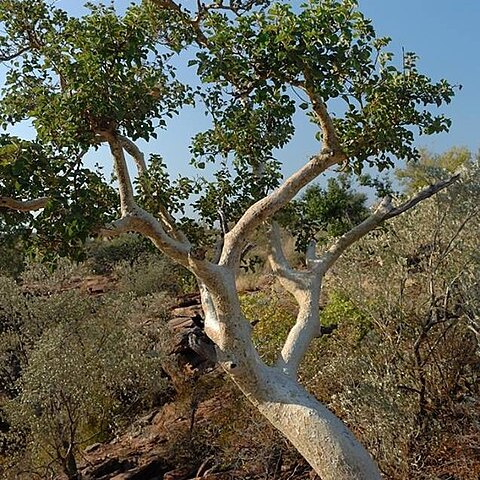A small sturdy fig. It is a shrub. It grows up to 5-7 m high. The bark is white or very pale grey. The stem and roots are often plastered over the rock face. The leaves are small and kidney shaped. They are 2-5 cm long. They are densely velvety. Underneath is pale grey. The base of lobed and the edges are wavy. The leaf stalk is 2.5 cm long. The figs are 10 mm across and hairy. They occur singly or in pairs in the axils of leaves. They are green to reddish when ripe.
Small tree, up to 7 m high. Leaves heart-shaped, usually broader than long, densely hairy on both surfaces. Figs sessile, hairy, up to 10 mm in diameter, red when ripe.
Figs in the leaf axils, subsessile or on peduncles up to 2 mm. long, basal bracts 2–3 mm. long, caducous.
Leafy twigs 2–6 mm. thick, white hirtellous to pubescent, periderm of older parts flaking off when dry.
Receptacle subglobose, 0.5–1 cm. in diam. when dry, densely white puberulous to hirtellous.
Tree up to 6 m. tall, or shrub, mostly epilithic; bark of the trunk orange-yellow.


